https://finance.sina.com.cn/chanjing/gsnews/2019-03-25/doc-ihtxyzsm0201469.shtml
王健林与马云1亿世纪豪赌只剩1年 万达百货却败了?
2019年03月25日 07:59 中外管理
王健林之殇:百货不死,只是在慢慢升级
为什么王健林必然在2020年赢得与马云的赌局,但万达百货却败了?
文:本刊记者 任慧媛
2019年,王健林与马云的1亿世纪豪赌,只剩最后1年。
回顾2012,在“CCTV中国经济年度人物”颁奖现场,王健林、马云打赌:到2020年,如果电商在中国零售市场份额达到50%,王健林给马云奉上1个亿,反之,马云给王健林1个亿。
然而,豪赌只剩最后1年时,万达百货即被王健林“清仓”——2019年2月,万达百货下属全部37家百货门店,被苏宁张近东宣布收购。

线下百货要败?
“弃子”“鸡肋”“包袱”“烫手山芋”!这是业界对万达集团卖掉万达百货之时用的最多的几个形容。鼎盛之后的落寞,豪赌结局之前的败走,万达百货仿佛不被所有人待见。
然而,事实上,这场豪赌王健林已是赢家,只是万达百货败了而已。
据国家统计局发布的数据:2018年1-12月,中国社会消费品零售总额为38万亿元人民币,全国网上零售额为9万亿元。
也就是说,网络零售基本上仅占了全国消费品零售总额的零头!到2020年占50%的可能性几乎为零。
可是,为什么王健林必然在2020年赢得赌局,但万达百货却败了?
百货不死,只是在慢慢升级。那么,未来在哪里?
1
万达:三心二意的百货,一心一意的“二房东”
先看万达百货被卖的根本原因。
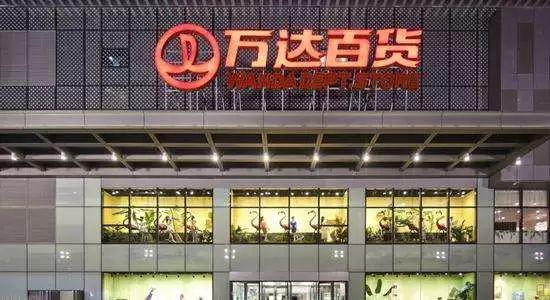
创立于2007年的万达百货业务,跟随着万达集团的商业地产而起。万达百货凭借万达集团“商业地产+百货”的模式,与万达广场同时进行全国布局。以让同行艳羡的速度,短短几年成为中国规模最大的百货商场。鼎盛时期全国门店总数曾达到110多家。万达百货与商业地产、文化产业、高级酒店一起并称为万达集团四大支柱产业。
怎奈,万达百货受宠的日子不长。2013年,万达百货首次出现亏损,随后在万达集团中的权重被降低。2015年7月中旬,万达集团董事长王健林表示,“要关掉国内一半的百货门店”。仅在2015年一年,万达百货就关闭了56家长期亏损的门店,震惊百货行业。
到2019年,万达百货打包“清仓”,卖给了苏宁易购(12.250, -0.45, -3.54%),快要被人淡忘了的万达百货再一次成为热点,也引来了人们对它的再一次审视。
万达百货之败,从定位上来说,万达百货主要作为万达广场的主力店而存在,主要是为了提高商铺出租率,加速万达广场开业。换句话说,万达百货的出现,更多是基于房地产项目商业配套的考量。所以万达百货一直以“寄生”模式存在于万达广场之中,万达在对其输血的同时,自身也耗费了大量精力。
精益零售创始人、上海碓胤管理咨询公司创始人龚胤全向《中外管理》表示:万达集团是商业地产商出身,用商业地产思维经营百货必然也是“商业中介”思维。但在消费需求变化越来越快、零售竞争越来越激烈的时代,中介租赁型百货运营模式必须转型为买手型自营模式。
所以说万达卖掉百货的确是甩掉了“包袱”,因为百货的运营需要专业聚焦,而非商业地产“出租柜台”。
中国购物中心产业资讯中心主任郭增利认为,万达百货在万达广场快速扩张的时期,发挥了不可替代的推手作用,但当万达百货进入深度运营时期,必须从服务于商业地产扩张,转向在零售业精耕细作,这时需要的是零售经营理念,而不是购物中心的管理整合理念,更不是地产和资本的思维。这些都需要万达做出适应市场的改变。
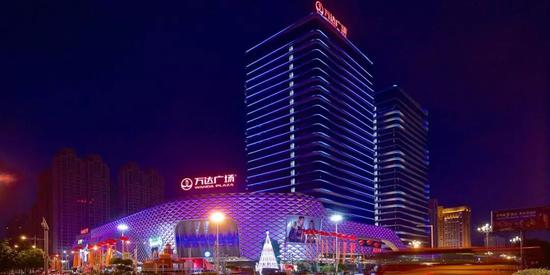
但改变的成本是巨大的,甚至可能是与万达企业业务冲突的。比如:万达广场与万达百货或多或少存在商户资源重叠的问题,而万达广场才是万达的核心资产,因此,万达百货成为“弃子”,则是其命运的必然。
2
苏宁的豪赌,危险是与万达百货模式并无质的差别
再看苏宁收购万达百货的“智慧”。
这笔交易,两家也算各取所需。围绕“智慧零售大开发战略”。苏宁近几年频频高举高打,步步为营。对于收购万达百货,苏宁表示:在苏宁易购全场景智慧零售生态系统中,缺的正是百货这一块。以此次收购补齐百货拼图,实现品类和业态的完善,正是为了加速智慧零售理念的落地。
诚然,如今线上互联网红利日渐枯竭,从线下获取流量,并抢占更多的场景入口,成为各大互联网巨头和传统零售商的共识。绝佳的商业地段意味着超高的人流量,拿下万达百货所占据的优质商圈地段,再辅之以人工智能和大数据等先进技术,壮大自身的“智慧零售”全生态业务,从而提升整体的业务效率和全场景零售体验。这,就是苏宁易购的盘算。
但值得注意的是,线上,苏宁面对的是天猫、京东和拼多多三面夹击的攻势;线下,苏宁小店持续亏损,7个月亏了3个亿。在这种情况下,苏宁仍旧要继续进军线下百货业,而且还是接盘持续亏损的万达百货。如果不是具有“点石成金”、脱胎换骨的本领,那苏宁一定是在做一场豪赌。
在龚胤全看来,收购万达百货之后,苏宁易购同样压力也很大——因为,苏宁本质上与万达一样属于商业地产租赁模式,而非自营买手模式。它们都是出租平台给商家,赚中间交易费的利润要比自营采购商品赚的利润多。所以,苏宁易购接手万达百货没有质的变化,前景不明。
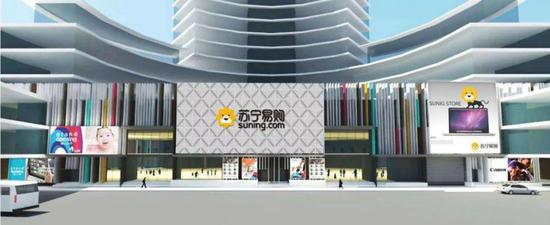
这绝不是“输出智慧零售能力,突破传统百货概念,从数字化和体验两方面改造供应链,打造全新的百货核心竞争力”几句话描述的那么简单。
其实,近几年传统百货业对于与互联网的结合没少做努力。
例如:步步高(9.710, -0.02, -0.21%)、大润发、万达百货分别开启云猴网、飞牛网、飞凡网线上平台,但通过云猴网的关停,阿里收购大润发之后废掉飞牛网,以及飞凡网的停摆,都说明了被百货业视为重要出路的“线上+线下”的智慧零售模式很难走通。
“百货业,以及超市等其他线下零售业的出路,并不在于‘线上+线下’的新零售或叫智慧零售模式,而在于对自身价值链的重构,以及内部管理体系的重构,从过去中介交易模式转型为自营商品经营模式。”龚胤全向《中外管理》如是说。而这就要求生产、供应、销售全价值链的组织协同与信息共享,尤其是大大提升企业内部的运营体系,从战略、业务与IT等方面进行精益零售运营体系的转型。但这并非依赖单纯的IT技术的驱动,而是着眼于将组织创新、人才、知识创新与IT技术相结合的“IT自动化”。
3
“百货业大萧条”的真相什么?
1991年是中国百货业发展的起步阶段,之后不断扩张,到2008年左右到达高峰。自2012年中国零售业出现分水岭以来,百货行业的营业额增速明显放缓,甚至在2015和2016年出现了负增长。如今,百货业的颓势在新消费背景下已延续多年。
百货业最被诟病的是商品经营能力。由于多年来百货业主要采用联营出租的经营模式,虽然为百货企业免去了买断商品的经营风险,以及扩张过程中的库存和资金压力,但是长期依赖于联营出租模式,也让多数百货企业逐步退化为单纯的“二房东”——对商场中经营的品牌,在其商品的进、销两端都没有控制权,对品牌和消费者的第一手信息和动向的掌握弱化。最终导致百货企业自主的商品采购能力和经营能力几乎丧失,自营占比在全行业中不超过5%。
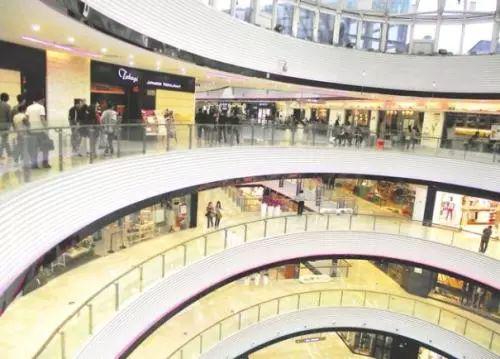
尽管中国百货业重启自营的阻力很大,如带来的资金占用、买手人才缺乏、利益再分配、原有分销体系的打破等问题,但自营模式的确适应了结构转型和消费升级的发展趋势。
一方面保证了商品质量,握住了品质保障的达摩克利斯之剑。商品的质量是百货企业的生命,自营管理是直接进货,在进货过程中亲自直接检验商品质量,在品质上降低了经营风险。
另一方面则增加了经营利润。自主定价、自主经营、自主营销,有助于商场更好地掌握货品资源,避免受制于品牌商和代理商。可根据不同季节、市场、消费群体,随时调整进销状态,灵活掌握库存。在联营模式下,百货行业的纯利润已经低至5%左右,而自营模式下,百货零售企业的纯利润可以达到10%以上。
所以,近年来中国百货企业一直在进行积极探索。除了传统自营优势较为突出的信誉楼、安德利(13.560, -0.04, -0.29%)等百货公司外,百盛的自营业务销售额占比达到了20%左右,王府井(16.860, -0.46, -2.66%)推出了“梦工厂”内部创业项目、新世界(7.760, -0.21, -2.63%)开发了N+系列自有品牌体系、汉光百货的化妆品绝大部分也都是自营。
信誉楼百货集团董事长、《中外管理》联合出品人穆建霞向《中外管理》谈到:如果百货店还是采用上个世纪的“品牌联营”模式,把自己化身成“二房东”,依赖于收取品牌方的进场费过日子,没有专业人员研究市场,也没有人关注顾客,只是一心研究如何收租,就背离了商业的本质。
和君集团合伙人、和君商业零售研究中心负责人、中国百货商业协会特聘专家丁昀也表达了类似观点。他认为:传统百货是在“卖方市场”年代快速成长起来的,形成了“二房东”、同质化、重品牌不重体验等与消费者价值相左的经营习惯。早些年这些行为习惯的恶果还无法显现,但随着互联网时代到来,消费者开始获得信息及话语权,便纷纷开始摒弃传统百货,投入到新的消费渠道的怀抱。
也就是说,传统百货的经营模式与经营理念已经走到了尽头。
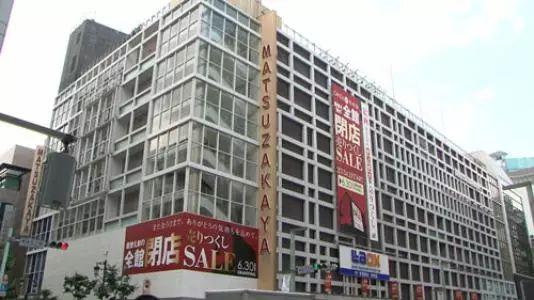
4
借鉴日本百货公司的长寿DNA
虽然百货业起源于欧洲,但由日本企业将之推到了巅峰,并引领了现代百货业的发展,所以当国内百货业出现困顿时,很自然地会将目光转向日本。
日本的百货企业历史多数比较悠久,最早的百货店松坂屋,创建于1611年,距今已经有400多年的历史。日本百货业在1990年代初达到巅峰,之后,随着泡沫经济的破灭、经济下滑且进入了长期的通缩、人口结构也逐渐老龄化,日本百货店的销售额总体在不断下滑。但是换一种角度看,日本百货业的疲软其实主要是与经济大环境有直接关系,但受电商的影响并不明显。
一个重要原因是,在日本,很早就对电商实施了征税政策。也就是说,线上的价格和实体店的价格基本一样。在政策利好下,服务及购物体验成了日本各大百货公司的主要突破口。
一直以来,在日本,线上主要发挥便捷优势,线下则更注重体验服务,渠道之间的竞争显得更加健康。而目前中国对于电商是否征税仍旧在探讨过程中。因此,在中国,网上开店门槛低,从而使得网上价格优势打倒了实体店,让很多传统的百货公司倒闭关门。
除了公平的税收政策外,日本零售业还值得借鉴之处有如下几点。
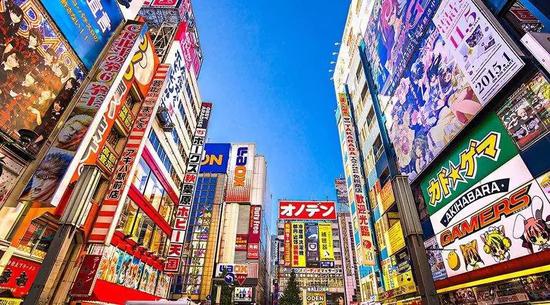
一,百货店之间互赢合作,创造共荣生态商业圈是日本百货业能够长期存续的一个重要原因。无论是在银座,还是在新宿,百货公司是一家挨着一家,相互竞争的态势必定存在。但是,这些百货公司往往会组建“协议会”,比如:当地的商业街协会,就各种商业业态的布局、道路的互通、商品价格的平衡等问题进行协商。秉持着相互繁荣的原则,进行抱团式合作经营,避免同业之间的恶性竞争。
二,日本各百货企业还通过互相间的合并、参股和股权交易,来获得互补效应。例如:三越和伊势丹,大丸和松坂屋,都互相参股,就连最高端的高岛屋也参股了阪急阪神百货。
三,日本百货店还向不同业态扩张。比如:阪急等百货店进入购物中心业态,高岛屋进入生鲜食品超市业态,三越伊势丹进入化妆品专业店业态。
与中国百货业的迷茫与焦虑不同,日本百货店在高速发展之后面临经济下行之际,整个百货行业并没有惊慌,而是坚守着百货店的本质并进行着积极主动的调整。也许,国内百货企业真正需要的,就是一场自上而下的彻底改革的魄力,小打小闹的改良和各种数字化赋能,难撼根本,难治痼疾。
“中国零售业在经历了如此波澜壮阔的风雨变化之后,还会是处在瞬息万变的过程当中,其原因虽然与国际、国内经济大环境息息相关,但是最为根本的还是,中国零售经营者是否真正本着基业长青、百年老店的企业经营理念,而非投资或投机,博取短暂的商业声誉。”《零售商学院》原主编、“零售苑”创始人沈奎向《中外管理》表示:中国零售行业的业态永远都是不断创新和变化中的,百货行业也是如此。所有的衰落和低迷,其实只是经营者本身的问题,离消费者越来越远,但真正的民生是永远不会消失的。
责任编辑:陈永乐
Https://finance.sina.com.cn/chanjing/gsnews/2019-03-25/doc-ihtxyzsm0201469.shtml
Wang Jianlin's 殇: The department store is not dead, just slowly upgrading
Why did Wang Jianlin win the gamble with Ma Yun in 2020, but Wanda Department Store lost?
Text: Our reporter Ren Huiyuan
In 2019, Wang Jianlin and Ma Yun’s 100 millionth century gamble, only the last year.
Looking back at 2012, at the "CCTV China Economic Person of the Year" awarding ceremony, Wang Jianlin and Ma Yun bet: By 2020, if e-commerce has a 50% share in China's retail market, Wang Jianlin will give Ma Yun 1 billion, and vice versa, Ma Yun gives Wang Jianlin 1 Billions.
However, in the last year of the gambling gambling, Wanda Department Store was “cleared” by Wang Jianlin – in February 2019, all 37 department stores under Wanda Department Store were announced by Suning Zhang Jindong.
Offline department store to lose?
"Abandoned child", "chicken ribs", "bread", "hot potato"! This is the most described by the industry when Wanda Group sold Wanda Department Store. After the heyday, the Wanda Department Store seems to be unseen by everyone.
However, in fact, this gamble Wang Jianlin is already a winner, but Wanda Department Store has lost.
According to the data released by the National Bureau of Statistics: From January to December 2018, the total retail sales of consumer goods in China was 38 trillion yuan, and the national online retail sales amounted to 9 trillion yuan.
In other words, online retailing basically only accounts for a fraction of the total retail sales of consumer goods nationwide! The probability of 50% by 2020 is almost zero.
However, why did Wang Jianlin win the gamble in 2020, but Wanda Department Store lost?
The department store is not dead, just slowly upgrading. So where is the future?
1
Wanda: Three-hearted department store, one-minded "two-room east"
First look at the root cause of Wanda Department Store being sold.
Founded in 2007, Wanda Department Store started with Wanda Group's commercial real estate. With the model of “Commercial Real Estate + Department Store” of Wanda Group, Wanda Department Store has a national layout with Wanda Plaza. In order to let the peers admire the speed, in just a few years, it has become the largest department store in China. In the heyday, the total number of stores nationwide reached more than 110. Together with commercial real estate, cultural industry and high-end hotels, Wanda Department Store is also known as the four pillar industries of Wanda Group.
What is the cause, Wanda Department Store is not favored for a long time. In 2013, Wanda Department Store suffered a loss for the first time, and the weight in the Wanda Group was subsequently reduced. In mid-July 2015, Wang Jianlin, chairman of Wanda Group, said that “it is necessary to shut down half of the domestic department stores”. In 2015 alone, Wanda Stores closed 56 long-term loss-making stores and shocked the department store industry.
By 2019, Wanda Department Store packaged "clearance" and sold it to Suning Tesco (12.250, -0.45, -3.54%). Wanda Department Store, which is about to be forgotten, once again became a hot spot, and attracted people to it again. One review.
Wanda Department Store's defeat, from the perspective of positioning, Wanda Department Store mainly exists as the main store of Wanda Plaza, mainly to improve the occupancy rate of shops and accelerate the opening of Wanda Plaza. In other words, the emergence of Wanda Department Store is based more on the consideration of commercial matching of real estate projects. Therefore, Wanda Department Store has always existed in Wanda Plaza in a “parasitic” mode. Wanda also spent a lot of energy on its own blood transfusion.
Gong Yiquan, founder of Lean Retail and founder of Shanghai Hao Management Consulting Co., said to the "Chinese and Foreign Management": Wanda Group is a commercial real estate developer. It is also a "commercial intermediary" thinking to use business real estate thinking to operate department stores. However, in an era when consumer demand is changing faster and retail competition is becoming more and more fierce, the operation mode of intermediary leasing department stores must be transformed into a buyer-type self-operated model.
Therefore, Wanda’s sale of department stores is indeed a “burden” because the operation of department stores requires professional focus rather than commercial real estate “rental counters”.
Guo Zengli, director of the China Shopping Center Industry Information Center, believes that Wanda Department Store played an irreplaceable role in the rapid expansion of Wanda Plaza. However, when Wanda Department Store entered a period of deep operation, it must shift from serving commercial real estate expansion to intensive retailing. At this time, what is needed is the concept of retail business, not the concept of management integration of shopping centers, and it is not the thinking of real estate and capital. These all require Wanda to adapt to market changes.
But the cost of change is huge, and may even be in conflict with Wanda's business. For example, Wanda Plaza and Wanda Department Store have more or less overlapping business resources, and Wanda Plaza is the core asset of Wanda. Therefore, Wanda Department Store has become a "discard", which is the inevitable result of its fate.
2
Suning’s gambling, the danger is not qualitatively different from the Wanda department store model.
Look at Suning’s acquisition of Wanda’s “wisdom”.
This transaction, the two also counted each need. Focusing on the “Smart Retail Development Strategy”. In recent years, Suning has frequently held high and high-profile, step by step. For the acquisition of Wanda Department Store, Suning said: In the Suning Tesco full scene smart retail ecosystem, what is missing is the department store. With this acquisition, we will complete the department store puzzles and improve the category and format, in order to accelerate the implementation of the smart retail concept.
It is true that today's online Internet dividends are drying up, taking traffic from offline and capturing more scenes, becoming the consensus of major Internet giants and traditional retailers. The excellent commercial location means high traffic, winning the high-quality business district occupied by Wanda Department Store, supplemented by advanced technologies such as artificial intelligence and big data, and expanding its own “smart retail” ecological business. Improve overall business efficiency and a full-scenario retail experience. This is the calculation of Suning Tesco.
But it is worth noting that, on the line, Suning is facing the offensive of Tmall, Jingdong and Ziduoduo. Under the line, Suning stores continue to lose money, losing 300 million in 7 months. Under this circumstance, Suning still has to continue to enter the offline department store industry, and it is still a Wanda department store that continues to lose money. If it is not a "point stone into gold", the ability to reinvent the bones, then Suning must be doing a gamble.
In Gong Yuquan's view, after the acquisition of Wanda Department Store, Suning Tesco is also under great pressure – because Suning is essentially a commercial real estate leasing model, rather than a self-operated buyer model. They are all rental platforms for merchants, and the profits from earning intermediate transaction fees are more than the profits from self-purchased goods. Therefore, Suning Tesco took over the Wanda Department Store without qualitative changes, and the prospects are unknown.
This is by no means a simple description of the export of smart retail capabilities, breaking through the traditional department store concept, transforming the supply chain from both digital and experience, and creating a new department store core competitiveness.
In fact, in recent years, the traditional department store industry has made little effort to integrate with the Internet.
For example: BBK (9.710, -0.02, -0.21%), RT-Mart, Wanda Department Store respectively opened the cloud monkey network, Fei Niu network, Feifan network online platform, but through the closure of the cloud monkey network, Ali acquired the RT-Mart and then abolished the flight The cattle network, as well as the lockout of Feifan.com, all indicate that the “online + offline” smart retail model, which is regarded as an important way out by the department store industry, is difficult to get through.
“The way out for the department store industry, as well as other offline retail businesses such as supermarkets, is not in the 'online + offline' new retail or smart retail model, but in the reconstruction of its own value chain and the internal management system. Structure, from the past intermediary transaction mode to a self-operated commodity business model." Gong Yiquan said to "Chinese and foreign management". This requires the production, supply, and sales of the entire value chain organization and information sharing, especially to greatly enhance the internal operating system, from the strategic, business and IT aspects of the transformation of the lean retail operating system. But this is not driven by pure IT technology, but rather the "IT automation" that combines organizational innovation, talent, knowledge innovation and IT technology.
3
What is the truth about the "Depression of the Department Store"?
1991 was the initial stage of the development of China's department store industry, and it continued to expand and reached its peak around 2008. Since the watershed in China's retail industry in 2012, the growth rate of the department store's turnover has slowed significantly, even in 2015 and 2016. Today, the decline of the department store industry has continued for many years in the context of new consumption.
The most criticized department store industry is the ability to manage goods. Since the department store industry has mainly adopted the joint-venting business model for many years, although the department store has eliminated the operational risk of buying out goods and the inventory and capital pressure during the expansion process, it has long relied on the joint-venture leasing model and also allows most department stores. Gradually degenerate into a simple "two landlords" - for the brands operating in the mall, there is no control over the import and sale of their goods, the first-hand information and trends of the brand and consumers are weakened. In the end, the department's independent purchasing power and operating capacity are almost lost, and the proportion of self-operated products is no more than 5% in the whole industry.
Although the resistance of China's department store industry to restart self-employment is very large, such as the capital occupation, the lack of buyer talent, the redistribution of interests, and the breaking of the original distribution system, the self-operated model does adapt to structural transformation and consumption upgrading. development trend.
On the one hand, it guarantees the quality of the goods and holds the sword of Damocles with quality assurance. The quality of goods is the life of department stores. Self-operated management is direct purchase. In the process of purchasing, the quality of goods is directly inspected and the risk of operation is reduced.
On the other hand, it increases operating profit. Independent pricing, self-employment, and independent marketing will help the mall to better grasp the goods resources and avoid being subject to brand owners and agents. According to different seasons, markets, and consumer groups, we can adjust the status of sales and sales at any time to flexibly control inventory. Under the joint venture model, the net profit of the department store industry has been as low as 5%. Under the self-operated model, the net profit of department store retail enterprises can reach more than 10%.
Therefore, Chinese department stores have been actively exploring in recent years. In addition to the traditional self-operated advantages of the prestige building, Andre (13.560, -0.04, -0.29%) and other department stores, Parkson's self-operated business accounted for about 20% of sales, Wangfujing (16.860, - 0.46, -2.66%) launched the "Dream Factory" internal entrepreneurial project, New World (7.760, -0.21, -2.63%) developed the N+ series of private label system, and most of the cosmetics of Hanguang Department Store are also self-operated .
Mu Jianxia, the chairman of the Credit House Department Store Group and the co-producer of "Chinese and Foreign Management", said to "Chinese and Foreign Management": If the department store still adopts the "brand joint venture" model of the last century, it turns itself into a "second landlord" and relies on it. In order to collect the entry fee from the brand, there is no professional research market, no one pays attention to the customer, but just study how to collect the rent, it deviates from the essence of business.
Ding Wei, a partner of Hejun Group, the head of Hejun Commercial Retail Research Center and a special expert of China Department Store Business Association, also expressed similar views. He believes that traditional department stores have grown rapidly in the "seller market" era, forming a business habit of "two landlords", homogenization, heavy brand not heavy experience and consumer value. In the early years, the consequences of these behavioral habits could not be revealed. However, with the advent of the Internet era, consumers began to gain access to information and voice, and they began to abandon traditional department stores and invest in the embrace of new consumer channels.
In other words, the business model and business philosophy of traditional department stores have come to an end.
4
Learn from the longevity DNA of Japanese department stores
Although the department store originated in Europe, it was pushed to the peak by Japanese companies and led the development of the modern department store industry. Therefore, when the domestic department store industry is in trouble, it will naturally turn its attention to Japan.
Japan’s department stores have a long history. The earliest department store, Matsuzaka, was founded in 1611 and has a history of more than 400 years. The Japanese department store industry reached its peak in the early 1990s. After that, with the bursting of the bubble economy, the economic downturn, the long-term deflation, and the aging of the population structure, the sales of Japanese department stores were generally declining. But from another perspective, the weakness of the Japanese department store industry is actually the main
王健林与马云1亿世纪豪赌只剩1年 万达百货却败了?
2019年03月25日 07:59 中外管理
王健林之殇:百货不死,只是在慢慢升级
为什么王健林必然在2020年赢得与马云的赌局,但万达百货却败了?
文:本刊记者 任慧媛
2019年,王健林与马云的1亿世纪豪赌,只剩最后1年。
回顾2012,在“CCTV中国经济年度人物”颁奖现场,王健林、马云打赌:到2020年,如果电商在中国零售市场份额达到50%,王健林给马云奉上1个亿,反之,马云给王健林1个亿。
然而,豪赌只剩最后1年时,万达百货即被王健林“清仓”——2019年2月,万达百货下属全部37家百货门店,被苏宁张近东宣布收购。

线下百货要败?
“弃子”“鸡肋”“包袱”“烫手山芋”!这是业界对万达集团卖掉万达百货之时用的最多的几个形容。鼎盛之后的落寞,豪赌结局之前的败走,万达百货仿佛不被所有人待见。
然而,事实上,这场豪赌王健林已是赢家,只是万达百货败了而已。
据国家统计局发布的数据:2018年1-12月,中国社会消费品零售总额为38万亿元人民币,全国网上零售额为9万亿元。
也就是说,网络零售基本上仅占了全国消费品零售总额的零头!到2020年占50%的可能性几乎为零。
可是,为什么王健林必然在2020年赢得赌局,但万达百货却败了?
百货不死,只是在慢慢升级。那么,未来在哪里?
1
万达:三心二意的百货,一心一意的“二房东”
先看万达百货被卖的根本原因。

创立于2007年的万达百货业务,跟随着万达集团的商业地产而起。万达百货凭借万达集团“商业地产+百货”的模式,与万达广场同时进行全国布局。以让同行艳羡的速度,短短几年成为中国规模最大的百货商场。鼎盛时期全国门店总数曾达到110多家。万达百货与商业地产、文化产业、高级酒店一起并称为万达集团四大支柱产业。
怎奈,万达百货受宠的日子不长。2013年,万达百货首次出现亏损,随后在万达集团中的权重被降低。2015年7月中旬,万达集团董事长王健林表示,“要关掉国内一半的百货门店”。仅在2015年一年,万达百货就关闭了56家长期亏损的门店,震惊百货行业。
到2019年,万达百货打包“清仓”,卖给了苏宁易购(12.250, -0.45, -3.54%),快要被人淡忘了的万达百货再一次成为热点,也引来了人们对它的再一次审视。
万达百货之败,从定位上来说,万达百货主要作为万达广场的主力店而存在,主要是为了提高商铺出租率,加速万达广场开业。换句话说,万达百货的出现,更多是基于房地产项目商业配套的考量。所以万达百货一直以“寄生”模式存在于万达广场之中,万达在对其输血的同时,自身也耗费了大量精力。
精益零售创始人、上海碓胤管理咨询公司创始人龚胤全向《中外管理》表示:万达集团是商业地产商出身,用商业地产思维经营百货必然也是“商业中介”思维。但在消费需求变化越来越快、零售竞争越来越激烈的时代,中介租赁型百货运营模式必须转型为买手型自营模式。
所以说万达卖掉百货的确是甩掉了“包袱”,因为百货的运营需要专业聚焦,而非商业地产“出租柜台”。
中国购物中心产业资讯中心主任郭增利认为,万达百货在万达广场快速扩张的时期,发挥了不可替代的推手作用,但当万达百货进入深度运营时期,必须从服务于商业地产扩张,转向在零售业精耕细作,这时需要的是零售经营理念,而不是购物中心的管理整合理念,更不是地产和资本的思维。这些都需要万达做出适应市场的改变。

但改变的成本是巨大的,甚至可能是与万达企业业务冲突的。比如:万达广场与万达百货或多或少存在商户资源重叠的问题,而万达广场才是万达的核心资产,因此,万达百货成为“弃子”,则是其命运的必然。
2
苏宁的豪赌,危险是与万达百货模式并无质的差别
再看苏宁收购万达百货的“智慧”。
这笔交易,两家也算各取所需。围绕“智慧零售大开发战略”。苏宁近几年频频高举高打,步步为营。对于收购万达百货,苏宁表示:在苏宁易购全场景智慧零售生态系统中,缺的正是百货这一块。以此次收购补齐百货拼图,实现品类和业态的完善,正是为了加速智慧零售理念的落地。
诚然,如今线上互联网红利日渐枯竭,从线下获取流量,并抢占更多的场景入口,成为各大互联网巨头和传统零售商的共识。绝佳的商业地段意味着超高的人流量,拿下万达百货所占据的优质商圈地段,再辅之以人工智能和大数据等先进技术,壮大自身的“智慧零售”全生态业务,从而提升整体的业务效率和全场景零售体验。这,就是苏宁易购的盘算。
但值得注意的是,线上,苏宁面对的是天猫、京东和拼多多三面夹击的攻势;线下,苏宁小店持续亏损,7个月亏了3个亿。在这种情况下,苏宁仍旧要继续进军线下百货业,而且还是接盘持续亏损的万达百货。如果不是具有“点石成金”、脱胎换骨的本领,那苏宁一定是在做一场豪赌。
在龚胤全看来,收购万达百货之后,苏宁易购同样压力也很大——因为,苏宁本质上与万达一样属于商业地产租赁模式,而非自营买手模式。它们都是出租平台给商家,赚中间交易费的利润要比自营采购商品赚的利润多。所以,苏宁易购接手万达百货没有质的变化,前景不明。

这绝不是“输出智慧零售能力,突破传统百货概念,从数字化和体验两方面改造供应链,打造全新的百货核心竞争力”几句话描述的那么简单。
其实,近几年传统百货业对于与互联网的结合没少做努力。
例如:步步高(9.710, -0.02, -0.21%)、大润发、万达百货分别开启云猴网、飞牛网、飞凡网线上平台,但通过云猴网的关停,阿里收购大润发之后废掉飞牛网,以及飞凡网的停摆,都说明了被百货业视为重要出路的“线上+线下”的智慧零售模式很难走通。
“百货业,以及超市等其他线下零售业的出路,并不在于‘线上+线下’的新零售或叫智慧零售模式,而在于对自身价值链的重构,以及内部管理体系的重构,从过去中介交易模式转型为自营商品经营模式。”龚胤全向《中外管理》如是说。而这就要求生产、供应、销售全价值链的组织协同与信息共享,尤其是大大提升企业内部的运营体系,从战略、业务与IT等方面进行精益零售运营体系的转型。但这并非依赖单纯的IT技术的驱动,而是着眼于将组织创新、人才、知识创新与IT技术相结合的“IT自动化”。
3
“百货业大萧条”的真相什么?
1991年是中国百货业发展的起步阶段,之后不断扩张,到2008年左右到达高峰。自2012年中国零售业出现分水岭以来,百货行业的营业额增速明显放缓,甚至在2015和2016年出现了负增长。如今,百货业的颓势在新消费背景下已延续多年。
百货业最被诟病的是商品经营能力。由于多年来百货业主要采用联营出租的经营模式,虽然为百货企业免去了买断商品的经营风险,以及扩张过程中的库存和资金压力,但是长期依赖于联营出租模式,也让多数百货企业逐步退化为单纯的“二房东”——对商场中经营的品牌,在其商品的进、销两端都没有控制权,对品牌和消费者的第一手信息和动向的掌握弱化。最终导致百货企业自主的商品采购能力和经营能力几乎丧失,自营占比在全行业中不超过5%。

尽管中国百货业重启自营的阻力很大,如带来的资金占用、买手人才缺乏、利益再分配、原有分销体系的打破等问题,但自营模式的确适应了结构转型和消费升级的发展趋势。
一方面保证了商品质量,握住了品质保障的达摩克利斯之剑。商品的质量是百货企业的生命,自营管理是直接进货,在进货过程中亲自直接检验商品质量,在品质上降低了经营风险。
另一方面则增加了经营利润。自主定价、自主经营、自主营销,有助于商场更好地掌握货品资源,避免受制于品牌商和代理商。可根据不同季节、市场、消费群体,随时调整进销状态,灵活掌握库存。在联营模式下,百货行业的纯利润已经低至5%左右,而自营模式下,百货零售企业的纯利润可以达到10%以上。
所以,近年来中国百货企业一直在进行积极探索。除了传统自营优势较为突出的信誉楼、安德利(13.560, -0.04, -0.29%)等百货公司外,百盛的自营业务销售额占比达到了20%左右,王府井(16.860, -0.46, -2.66%)推出了“梦工厂”内部创业项目、新世界(7.760, -0.21, -2.63%)开发了N+系列自有品牌体系、汉光百货的化妆品绝大部分也都是自营。
信誉楼百货集团董事长、《中外管理》联合出品人穆建霞向《中外管理》谈到:如果百货店还是采用上个世纪的“品牌联营”模式,把自己化身成“二房东”,依赖于收取品牌方的进场费过日子,没有专业人员研究市场,也没有人关注顾客,只是一心研究如何收租,就背离了商业的本质。
和君集团合伙人、和君商业零售研究中心负责人、中国百货商业协会特聘专家丁昀也表达了类似观点。他认为:传统百货是在“卖方市场”年代快速成长起来的,形成了“二房东”、同质化、重品牌不重体验等与消费者价值相左的经营习惯。早些年这些行为习惯的恶果还无法显现,但随着互联网时代到来,消费者开始获得信息及话语权,便纷纷开始摒弃传统百货,投入到新的消费渠道的怀抱。
也就是说,传统百货的经营模式与经营理念已经走到了尽头。

4
借鉴日本百货公司的长寿DNA
虽然百货业起源于欧洲,但由日本企业将之推到了巅峰,并引领了现代百货业的发展,所以当国内百货业出现困顿时,很自然地会将目光转向日本。
日本的百货企业历史多数比较悠久,最早的百货店松坂屋,创建于1611年,距今已经有400多年的历史。日本百货业在1990年代初达到巅峰,之后,随着泡沫经济的破灭、经济下滑且进入了长期的通缩、人口结构也逐渐老龄化,日本百货店的销售额总体在不断下滑。但是换一种角度看,日本百货业的疲软其实主要是与经济大环境有直接关系,但受电商的影响并不明显。
一个重要原因是,在日本,很早就对电商实施了征税政策。也就是说,线上的价格和实体店的价格基本一样。在政策利好下,服务及购物体验成了日本各大百货公司的主要突破口。
一直以来,在日本,线上主要发挥便捷优势,线下则更注重体验服务,渠道之间的竞争显得更加健康。而目前中国对于电商是否征税仍旧在探讨过程中。因此,在中国,网上开店门槛低,从而使得网上价格优势打倒了实体店,让很多传统的百货公司倒闭关门。
除了公平的税收政策外,日本零售业还值得借鉴之处有如下几点。

一,百货店之间互赢合作,创造共荣生态商业圈是日本百货业能够长期存续的一个重要原因。无论是在银座,还是在新宿,百货公司是一家挨着一家,相互竞争的态势必定存在。但是,这些百货公司往往会组建“协议会”,比如:当地的商业街协会,就各种商业业态的布局、道路的互通、商品价格的平衡等问题进行协商。秉持着相互繁荣的原则,进行抱团式合作经营,避免同业之间的恶性竞争。
二,日本各百货企业还通过互相间的合并、参股和股权交易,来获得互补效应。例如:三越和伊势丹,大丸和松坂屋,都互相参股,就连最高端的高岛屋也参股了阪急阪神百货。
三,日本百货店还向不同业态扩张。比如:阪急等百货店进入购物中心业态,高岛屋进入生鲜食品超市业态,三越伊势丹进入化妆品专业店业态。
与中国百货业的迷茫与焦虑不同,日本百货店在高速发展之后面临经济下行之际,整个百货行业并没有惊慌,而是坚守着百货店的本质并进行着积极主动的调整。也许,国内百货企业真正需要的,就是一场自上而下的彻底改革的魄力,小打小闹的改良和各种数字化赋能,难撼根本,难治痼疾。
“中国零售业在经历了如此波澜壮阔的风雨变化之后,还会是处在瞬息万变的过程当中,其原因虽然与国际、国内经济大环境息息相关,但是最为根本的还是,中国零售经营者是否真正本着基业长青、百年老店的企业经营理念,而非投资或投机,博取短暂的商业声誉。”《零售商学院》原主编、“零售苑”创始人沈奎向《中外管理》表示:中国零售行业的业态永远都是不断创新和变化中的,百货行业也是如此。所有的衰落和低迷,其实只是经营者本身的问题,离消费者越来越远,但真正的民生是永远不会消失的。
责任编辑:陈永乐
Https://finance.sina.com.cn/chanjing/gsnews/2019-03-25/doc-ihtxyzsm0201469.shtml
Wang Jianlin's 殇: The department store is not dead, just slowly upgrading
Why did Wang Jianlin win the gamble with Ma Yun in 2020, but Wanda Department Store lost?
Text: Our reporter Ren Huiyuan
In 2019, Wang Jianlin and Ma Yun’s 100 millionth century gamble, only the last year.
Looking back at 2012, at the "CCTV China Economic Person of the Year" awarding ceremony, Wang Jianlin and Ma Yun bet: By 2020, if e-commerce has a 50% share in China's retail market, Wang Jianlin will give Ma Yun 1 billion, and vice versa, Ma Yun gives Wang Jianlin 1 Billions.
However, in the last year of the gambling gambling, Wanda Department Store was “cleared” by Wang Jianlin – in February 2019, all 37 department stores under Wanda Department Store were announced by Suning Zhang Jindong.
Offline department store to lose?
"Abandoned child", "chicken ribs", "bread", "hot potato"! This is the most described by the industry when Wanda Group sold Wanda Department Store. After the heyday, the Wanda Department Store seems to be unseen by everyone.
However, in fact, this gamble Wang Jianlin is already a winner, but Wanda Department Store has lost.
According to the data released by the National Bureau of Statistics: From January to December 2018, the total retail sales of consumer goods in China was 38 trillion yuan, and the national online retail sales amounted to 9 trillion yuan.
In other words, online retailing basically only accounts for a fraction of the total retail sales of consumer goods nationwide! The probability of 50% by 2020 is almost zero.
However, why did Wang Jianlin win the gamble in 2020, but Wanda Department Store lost?
The department store is not dead, just slowly upgrading. So where is the future?
1
Wanda: Three-hearted department store, one-minded "two-room east"
First look at the root cause of Wanda Department Store being sold.
Founded in 2007, Wanda Department Store started with Wanda Group's commercial real estate. With the model of “Commercial Real Estate + Department Store” of Wanda Group, Wanda Department Store has a national layout with Wanda Plaza. In order to let the peers admire the speed, in just a few years, it has become the largest department store in China. In the heyday, the total number of stores nationwide reached more than 110. Together with commercial real estate, cultural industry and high-end hotels, Wanda Department Store is also known as the four pillar industries of Wanda Group.
What is the cause, Wanda Department Store is not favored for a long time. In 2013, Wanda Department Store suffered a loss for the first time, and the weight in the Wanda Group was subsequently reduced. In mid-July 2015, Wang Jianlin, chairman of Wanda Group, said that “it is necessary to shut down half of the domestic department stores”. In 2015 alone, Wanda Stores closed 56 long-term loss-making stores and shocked the department store industry.
By 2019, Wanda Department Store packaged "clearance" and sold it to Suning Tesco (12.250, -0.45, -3.54%). Wanda Department Store, which is about to be forgotten, once again became a hot spot, and attracted people to it again. One review.
Wanda Department Store's defeat, from the perspective of positioning, Wanda Department Store mainly exists as the main store of Wanda Plaza, mainly to improve the occupancy rate of shops and accelerate the opening of Wanda Plaza. In other words, the emergence of Wanda Department Store is based more on the consideration of commercial matching of real estate projects. Therefore, Wanda Department Store has always existed in Wanda Plaza in a “parasitic” mode. Wanda also spent a lot of energy on its own blood transfusion.
Gong Yiquan, founder of Lean Retail and founder of Shanghai Hao Management Consulting Co., said to the "Chinese and Foreign Management": Wanda Group is a commercial real estate developer. It is also a "commercial intermediary" thinking to use business real estate thinking to operate department stores. However, in an era when consumer demand is changing faster and retail competition is becoming more and more fierce, the operation mode of intermediary leasing department stores must be transformed into a buyer-type self-operated model.
Therefore, Wanda’s sale of department stores is indeed a “burden” because the operation of department stores requires professional focus rather than commercial real estate “rental counters”.
Guo Zengli, director of the China Shopping Center Industry Information Center, believes that Wanda Department Store played an irreplaceable role in the rapid expansion of Wanda Plaza. However, when Wanda Department Store entered a period of deep operation, it must shift from serving commercial real estate expansion to intensive retailing. At this time, what is needed is the concept of retail business, not the concept of management integration of shopping centers, and it is not the thinking of real estate and capital. These all require Wanda to adapt to market changes.
But the cost of change is huge, and may even be in conflict with Wanda's business. For example, Wanda Plaza and Wanda Department Store have more or less overlapping business resources, and Wanda Plaza is the core asset of Wanda. Therefore, Wanda Department Store has become a "discard", which is the inevitable result of its fate.
2
Suning’s gambling, the danger is not qualitatively different from the Wanda department store model.
Look at Suning’s acquisition of Wanda’s “wisdom”.
This transaction, the two also counted each need. Focusing on the “Smart Retail Development Strategy”. In recent years, Suning has frequently held high and high-profile, step by step. For the acquisition of Wanda Department Store, Suning said: In the Suning Tesco full scene smart retail ecosystem, what is missing is the department store. With this acquisition, we will complete the department store puzzles and improve the category and format, in order to accelerate the implementation of the smart retail concept.
It is true that today's online Internet dividends are drying up, taking traffic from offline and capturing more scenes, becoming the consensus of major Internet giants and traditional retailers. The excellent commercial location means high traffic, winning the high-quality business district occupied by Wanda Department Store, supplemented by advanced technologies such as artificial intelligence and big data, and expanding its own “smart retail” ecological business. Improve overall business efficiency and a full-scenario retail experience. This is the calculation of Suning Tesco.
But it is worth noting that, on the line, Suning is facing the offensive of Tmall, Jingdong and Ziduoduo. Under the line, Suning stores continue to lose money, losing 300 million in 7 months. Under this circumstance, Suning still has to continue to enter the offline department store industry, and it is still a Wanda department store that continues to lose money. If it is not a "point stone into gold", the ability to reinvent the bones, then Suning must be doing a gamble.
In Gong Yuquan's view, after the acquisition of Wanda Department Store, Suning Tesco is also under great pressure – because Suning is essentially a commercial real estate leasing model, rather than a self-operated buyer model. They are all rental platforms for merchants, and the profits from earning intermediate transaction fees are more than the profits from self-purchased goods. Therefore, Suning Tesco took over the Wanda Department Store without qualitative changes, and the prospects are unknown.
This is by no means a simple description of the export of smart retail capabilities, breaking through the traditional department store concept, transforming the supply chain from both digital and experience, and creating a new department store core competitiveness.
In fact, in recent years, the traditional department store industry has made little effort to integrate with the Internet.
For example: BBK (9.710, -0.02, -0.21%), RT-Mart, Wanda Department Store respectively opened the cloud monkey network, Fei Niu network, Feifan network online platform, but through the closure of the cloud monkey network, Ali acquired the RT-Mart and then abolished the flight The cattle network, as well as the lockout of Feifan.com, all indicate that the “online + offline” smart retail model, which is regarded as an important way out by the department store industry, is difficult to get through.
“The way out for the department store industry, as well as other offline retail businesses such as supermarkets, is not in the 'online + offline' new retail or smart retail model, but in the reconstruction of its own value chain and the internal management system. Structure, from the past intermediary transaction mode to a self-operated commodity business model." Gong Yiquan said to "Chinese and foreign management". This requires the production, supply, and sales of the entire value chain organization and information sharing, especially to greatly enhance the internal operating system, from the strategic, business and IT aspects of the transformation of the lean retail operating system. But this is not driven by pure IT technology, but rather the "IT automation" that combines organizational innovation, talent, knowledge innovation and IT technology.
3
What is the truth about the "Depression of the Department Store"?
1991 was the initial stage of the development of China's department store industry, and it continued to expand and reached its peak around 2008. Since the watershed in China's retail industry in 2012, the growth rate of the department store's turnover has slowed significantly, even in 2015 and 2016. Today, the decline of the department store industry has continued for many years in the context of new consumption.
The most criticized department store industry is the ability to manage goods. Since the department store industry has mainly adopted the joint-venting business model for many years, although the department store has eliminated the operational risk of buying out goods and the inventory and capital pressure during the expansion process, it has long relied on the joint-venture leasing model and also allows most department stores. Gradually degenerate into a simple "two landlords" - for the brands operating in the mall, there is no control over the import and sale of their goods, the first-hand information and trends of the brand and consumers are weakened. In the end, the department's independent purchasing power and operating capacity are almost lost, and the proportion of self-operated products is no more than 5% in the whole industry.
Although the resistance of China's department store industry to restart self-employment is very large, such as the capital occupation, the lack of buyer talent, the redistribution of interests, and the breaking of the original distribution system, the self-operated model does adapt to structural transformation and consumption upgrading. development trend.
On the one hand, it guarantees the quality of the goods and holds the sword of Damocles with quality assurance. The quality of goods is the life of department stores. Self-operated management is direct purchase. In the process of purchasing, the quality of goods is directly inspected and the risk of operation is reduced.
On the other hand, it increases operating profit. Independent pricing, self-employment, and independent marketing will help the mall to better grasp the goods resources and avoid being subject to brand owners and agents. According to different seasons, markets, and consumer groups, we can adjust the status of sales and sales at any time to flexibly control inventory. Under the joint venture model, the net profit of the department store industry has been as low as 5%. Under the self-operated model, the net profit of department store retail enterprises can reach more than 10%.
Therefore, Chinese department stores have been actively exploring in recent years. In addition to the traditional self-operated advantages of the prestige building, Andre (13.560, -0.04, -0.29%) and other department stores, Parkson's self-operated business accounted for about 20% of sales, Wangfujing (16.860, - 0.46, -2.66%) launched the "Dream Factory" internal entrepreneurial project, New World (7.760, -0.21, -2.63%) developed the N+ series of private label system, and most of the cosmetics of Hanguang Department Store are also self-operated .
Mu Jianxia, the chairman of the Credit House Department Store Group and the co-producer of "Chinese and Foreign Management", said to "Chinese and Foreign Management": If the department store still adopts the "brand joint venture" model of the last century, it turns itself into a "second landlord" and relies on it. In order to collect the entry fee from the brand, there is no professional research market, no one pays attention to the customer, but just study how to collect the rent, it deviates from the essence of business.
Ding Wei, a partner of Hejun Group, the head of Hejun Commercial Retail Research Center and a special expert of China Department Store Business Association, also expressed similar views. He believes that traditional department stores have grown rapidly in the "seller market" era, forming a business habit of "two landlords", homogenization, heavy brand not heavy experience and consumer value. In the early years, the consequences of these behavioral habits could not be revealed. However, with the advent of the Internet era, consumers began to gain access to information and voice, and they began to abandon traditional department stores and invest in the embrace of new consumer channels.
In other words, the business model and business philosophy of traditional department stores have come to an end.
4
Learn from the longevity DNA of Japanese department stores
Although the department store originated in Europe, it was pushed to the peak by Japanese companies and led the development of the modern department store industry. Therefore, when the domestic department store industry is in trouble, it will naturally turn its attention to Japan.
Japan’s department stores have a long history. The earliest department store, Matsuzaka, was founded in 1611 and has a history of more than 400 years. The Japanese department store industry reached its peak in the early 1990s. After that, with the bursting of the bubble economy, the economic downturn, the long-term deflation, and the aging of the population structure, the sales of Japanese department stores were generally declining. But from another perspective, the weakness of the Japanese department store industry is actually the main
